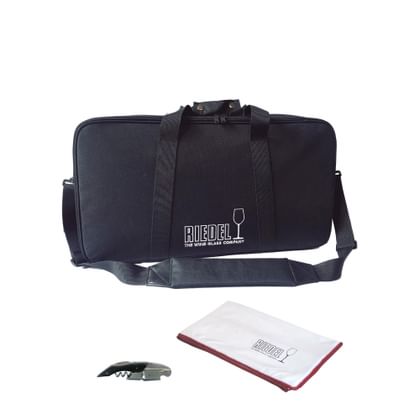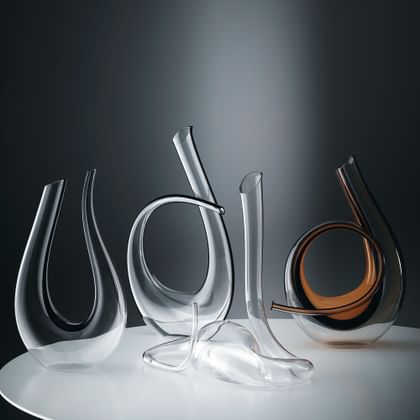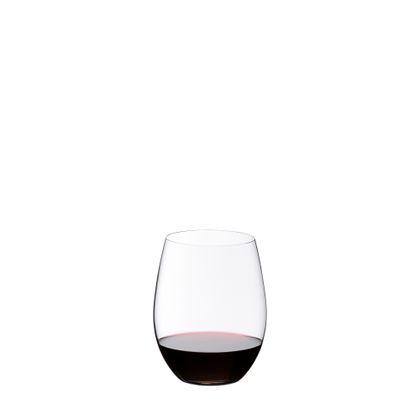somewhere in the middle
Warm, cold, or somewhere in the middle – the perfect temperature for your wine.

You may have heard that "white wines go in the fridge, red wines stay at room temperature". But is it really that simple? What temperature should we drink our wines at, and why does it matter?
Whatever drink you're enjoying, temperature matters. You may love a cold glass of cola with ice and a slice of lemon, but how much would you enjoy lukewarm cola?
Wine is no different in that every wine has a temperature where it shines brightest. All too often, though, wine is served at a temperature that doesn't allow it to flourish. Fortunately, there are some straightforward steps to take that can help you enjoy your wine at its best temperature.

Why does serving temperature matter?
In 2015, when Australian wine brand Taylors Wines released thermal technology on their wine bottle labels, they highlighted the importance of enjoying wine at the optimum temperature. Like Taylors, we emphasize the impact of temperature on a number of your wine's qualities, such as:
- Aroma. When wine is served at the appropriate temperature, its aromas are more pronounced and enjoyable. In contrast, when served at the wrong temperature, your wine's aromas can either be dulled or become too intense and overpowering.
- Taste. Serving your wine at the correct temperature allows you to experience its full range of flavors and appreciate the balance between acidity, sweetness, tannins, and alcohol.
- Texture. Proper serving temperature can contribute to a smooth, pleasant mouthfeel. Meanwhile, the incorrect serving temperature can make a wine anything from oily and heavy to overly astringent and watery.
- Complexity. Proper serving temperature allows you to experience a good wine's complexity and nuances that it has developed. Improper serving temperature can strip a wine of this enjoyable complexity, diminishing your overall experience.
That's quite the list of qualities that temperature can impact. So, what are the most common issues we see with the temperature wine is served at, and what can you do about this?

Our reds are often too warm
You may have heard the advice before that red wine is best kept at room temperature. In modern times, this advice sort of misses the mark. The issue is that this wisdom comes from pre-central heating days when the ambient temperature in many wine-producing regions was between 13 and 18˚C/55.5 and 64.5˚F. Nowadays, the concept of 'room temperature' has changed radically, with many rooms typically being heated to between 20 and 22˚C/68 and 71.5˚F.
Why is this an issue for red wine? Depending on how full-bodied it is, red wine is typically best enjoyed at 13-18˚C/55.5-64.5˚F. So, while the "serve red wine at room temperature" advice was helpful before central heating, it now results in red wines that can be considerably warmer than their optimum temperature.
Serving your red wine at these too-warm temperatures can accelerate its aging process, causing it to lose its freshness and vibrancy; its alcohol aromas can become overly pronounced, overwhelming the wine's other characteristics, and its tannins can become more aggressive and astringent - something that can become particularly unpleasant in fuller-bodied wines that are already high in tannins.

The variance between different red wines
As previously mentioned, there is a variance between types of red wine when it comes to the best serving temperature, which usually comes down to how full-bodied they are. Lighter-bodied reds like Pinot Noir and Gamay are best enjoyed at 13-16°C/55.5-61°F to preserve their delicate aromas and acidity, while full-bodied red wines like Cabernet Sauvignon and Zinfandel are best served at around 18°C/64.5°F to maintain their complex aromas and flavors.
To account for this, chill your lighter-bodied reds for a little longer than you would full-bodied reds. Note how various chill timings work for different wines; before long, you'll have perfected the art of serving your red wine exactly how you like it.
Our whites are often too cold
The problem with how many of us drink our white wines is the opposite of what we encounter with reds. While we too often open a bottle of red without chilling it, when it comes to white wine, we get to pouring and sipping immediately after taking it out of the fridge.
The advice to serve white wine chilled isn't wrong - after all, white wine is best served at anywhere between 6 and 14˚C/43 and 57˚F, so room temperature certainly wouldn't do for even the most full-bodied white wines. The issue is how cold white wine is when you remove it from the fridge. Fridge temperatures typically range from 2 to 5˚C/35.5 to 41˚F, so unless you have a wine fridge that allows you to set the optimum temperature for your white wine, your white wine will come out of the refrigerator too chilled to show its qualities off.
What impact does being too cold have on your wine specifically?
Cooler temperatures can inhibit the release of volatile compounds, muting your wine's aromas and making it difficult to appreciate its full range of scents. It can also make the wine's flavors less discernible (imagine holding an ice cube in your mouth then attempting to taste something full of flavor!) while accentuating acidity, making that dry Riesling of yours excessively tart and unpalatable. White wines served too cold may also feel thin or watery, creating an unusual mouthfeel that diminishes their richness and body.
The variance between different white wines
Like red wines, lighter-bodied white wines are best served cooler than full-bodied white wines. A vibrant Sauvignon Blanc may be best at 6-10˚C/43-50˚F, while an Oaked Chardonnay may thrive at 11-14˚C/52-57˚F. If you've bought yourself a dessert wine, these are also best served at 6-10˚C/43-50˚F, as doing so helps to balance their sweetness by providing a refreshing contrast, whereas a warmer dessert wine could display overwhelming levels of sweetness.
To get your serving temperature spot-on every time, always look up what's best for whichever white wine you have on the go and act accordingly regarding how long you take it out of the fridge before enjoying it. Experiment with timings and find what works best for you.

Applying this when you're out and about
The above information should stand you in good stead when you're enjoying wine at home, but what about when you're visiting somewhere as a customer?
Despite the information we've provided above, many great bars and restaurants still serve their red wines at room temperature and their white wines straight from the fridge. If you receive a white wine that's too cold, you can give it some time to warm up slightly before you begin drinking, or ask if another bottle is available that hasn't been sitting in the fridge for as long. If, on the other hand, you order red wine that comes out too warm, don't be afraid to ask for a half-ice/half-water bucket to help chill it slightly! These minor adjustments can make a considerable difference to your wine enjoyment and, subsequently, your enjoyment of the entire evening.
Getting the temperature of your wine right is part of our philosophy that there are many simple things that any wine lover can do to get more out of the wines they love. The cumulative effect of acing your wine's temperature, along with other factors such as using the correct RIEDEL Grape Varietal Specific wine glass, decanting your wine, utilizing sight, smell, and taste when sipping your wine, and - if relevant, pairing it with complementary foods, ensures you get the best possible overall wine-drinking experience.
Locations






